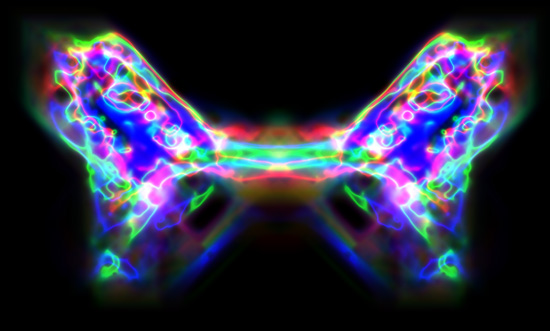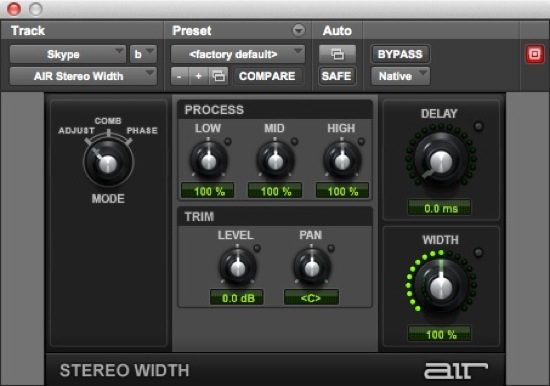Stereo Width Tricks And Tips In Pro Tools - Part 6

Convolution plug-ins
Here is a different use for impulse response plug-ins. Take a mono source signal, buss it to two mono Aux tracks, panned hard left and right and grouped for convenience. Insert Trim and monophonic convolution reverb plug-in into both Aux tracks.
Use the same relatively neutral guitar cabinet IR on both reverb plug-ins, invert the phase on one of the Trim plug-ins and away you go. Works well on Rhodes pianos, acoustic bass, both acoustic and electric guitars. It is important that the impulse responses are small space or cabinet IRs and not reverbs. This creates the illusion that the original signal is in stereo, and not a monophonic source in a reverberant space (even a small one). The result is tight and dry, and when collapsed into mono, there is no residual room sound as the IRs should completely cancel out.
Dedicated stereo enhancement plug-ins
Most of these are 3rd party plug-ins like the Waves PS22 plug-in, which I often use on a vocal channel just to open it up a little. Others include iZotope’s Ozone mastering plug-in and the PSP Pseudo Stereo and Stereo Enhancer plug-ins from their stereo pack. But there is a stereo enhancer plug-in that comes bundled in every Pro Tools system and it is the AIR Stereo Width plug-in.

This plug-in can do any of the tricks I have described so far but does it using the MS route.
Adjust Mode
This will produce a similar effect to the phase trick I described earlier by adjusting the stereo Width control. Go beyond 100% and you will start to create out of speaker effects as the Width control is effectively the S channel gain. But in this mode AIR Stereo Width does more, the EQ section is put in the S channel, but unlike my MS EQ tricks, there is no second EQ to go in the M channel. Finally the Delay adds delay in the right channel like the small delay trick above. Do try the “Haas guitar doubler” preset.
Comb Mode
In this mode the delay is put in the M channel and so when the M & and S are decoded back to L & R you get a comb filter effect where some frequencies appear to come from the right channel and others from the left. Again the Width control, being the S channel gain, will control the amount of comb filtering and, as in the small delay trick, the signal can appear biased one way so use the Pan control to compensate for that. Note this is a fairly extreme effect, so probably not best done on overall mixes, but as a special effect on some mono signals can be very effective.
Phase Mode
In this mode the low/mid/high controls now set the centre frequencies of 3 phase shifters, which will phase shift the 3 bands relative to the left and right channels. Again the Width controls the amount of the effect and you will find this mode a little more subtle than the comb mode but probably still too much for overall mix treatments, but useful to stereo-ise mono signals.
AIR Stereo width tips
- The Adjust mode is good for overall mixes or any buss tracks you might have in your mix and will help to open them out nicely but in this context steer away from using the Delay option. As so often, it is best to increase the Width until you can hear it working and then back it off just a touch.
- When using any of these effects, always check your mono compatibility. I know this is less critical now very little of our work hits vinyl, but there are still a good number of consumers that will hear our handiwork in mono via the internet or radio so don’t forget this part of mix checking.
- Remember as I said at the start not everything has to be stereo. If everything in the mix is super wide stereo then you will loose the sense of space and depth in your mix. Pan your mono elements to defined positions across the stereo image and use the stereo elements subtly to create that sense of space and depth, remember ‘more is less’.
I hope you have found this series helpful in managing and getting the best out of the stereo sound field.